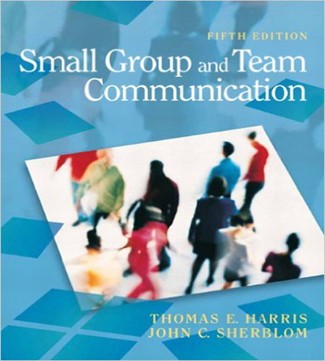Instant download Small Group and Team Communication 5th Edition Harris Sherblom Test Bank pdf docx epub after payment.

Product details:
- ISBN-10 : 1478637234
- ISBN-13 : 978-1478637233
- Author:
Small Group and Team Communication i ntegrates theory, research, and practical examples into a clear and logical presentation of how communication works in a variety of professional, social, civic, and personal groups and teams.
Through the incorporation of new research and the systems theory framework, extensive examples and updated exercises, the Fifth Edition promotes outstanding discussions in critical issues of diversity, ethics, and technology.
Table of contents:
- Chapter 1: Small Groups: Power, Definition, Attraction
- Types of Small Groups
- The Power of Groups
- Defining Small Group Communication
- Transactional Group Process
- Symbolic Behavior
- Shared Meaning
- Why We Join Groups
- Interpersonal Attraction
- Personal Need for Affiliation
- Commitment to Group Goals and Activities
- Assignment by Someone Else
- Characteristics and Coordinating Mechanisms of Small Groups
- Interdependence and Interactivity
- Exponential Number of Interactions
- Synergy
- Coordinating Mechanisms
- Characteristics of Small Group Communication
- Complex Transactions
- Interactive Complexities
- Groups in Organizations
- Organizational Examples
- Meetings
- Quality Decision Making Through Group Diversity and Ethics
- Summary
- Discussion Questions
- References
- Chapter 2: Small Group Communication: A System of Interaction
- Understanding Small Group Success
- Communication in Small Groups
- A Systems Approach to Small Group Communication
- Systems Theory
- Open Systems
- Complex Systems
- Example of Interactivity
- Summary
- Discussion Questions
- References
- Chapter 3: Norms, Roles, Cohesion, and Groupthink
- Norms
- The Reason for Norms
- Types of Norms
- Norms and Diversity
- Violating Norms
- Roles
- Types of Roles
- The Function of Roles
- Cohesion
- Influences on Cohesion
- Consequences of Group Cohesion
- Groupthink
- Summary
- Discussion Questions
- References
- Chapter 4: Phases of Group Development: Forming, Storming, Norming, and Performing
- Forming: Hello, Orientation, and Inclusion
- Storming: Conflict in Groups
- Norming: Emergence as a Group
- Performing: Making Decisions and Solving Problems
- Adjourning: Terminating, Saying “Good-Bye”
- Usefulness of the Phase Model
- Modifications
- Organizational Teams
- Overriding Influences
- Formal or Informal Group
- Task and Social Dynamics
- Primary and Secondary Tensions
- Summary
- Discussion Questions
- References
- Chapter 5: Diversity in Groups: The Strength of Different Perspectives
- Defining Diversity in Small Groups
- Assumptions and Stereotypes
- Communication Contexts
- Language Use
- Nonverbal Communication
- Diversity in Small Groups and Teams
- Group Commitment and Consensus
- Strength in Diversity
- Making Diverse Groups Work
- Conflict Management
- Hierarchies of Power
- Pressures for Conformity
- Computer-Mediated Virtual Teams
- Ethical Behavior
- Summary
- Discussion Questions
- References
- Chapter 6: Verbal and Nonverbal Communication
- Functions of Verbal Communication
- Task
- Process
- Narratives and Fantasies
- Structures of Meaning in Verbal Communication
- Denotative and Connotative Meaning
- Semantics
- Group Talk
- Humor
- Nonverbal Communication
- Principles of Nonverbal Communication
- Types of Nonverbal Communication
- Powerless Stereotypes
- Verbal and Nonverbal Cues in Computer-Mediated Communication
- Summary
- Discussion Questions
- References
- Chapter 7: Listening and Feedback: The Other Half of Communication
- The Influence of Culture on Listening
- Listening as a Critical Leadership Skill
- Motivation
- The Four Components of Listening
- Sensing (Hearing the Message)
- Interpreting the Message
- Evaluating the Message Content
- Memory: Retaining and Responding to the Message
- Active Listening
- Barriers to Active Listening
- Active Listening Response Methods
- Feedback: Responding to the Message
- Providing Constructive Feedback
- Receiving Feedback
- Summary
- Discussion Questions
- References
People also search:
Small Group and Team Communication 5th Edition
Small Group and Team Communication 5th Edition pdf
what is the example of small group communication
what is the definition of small group communication





